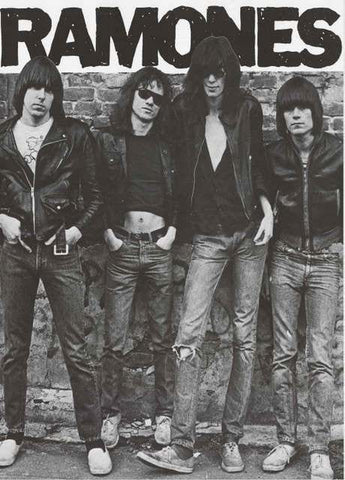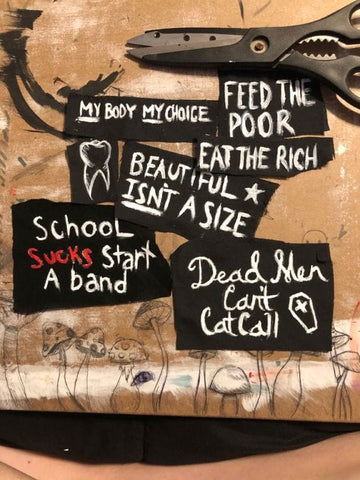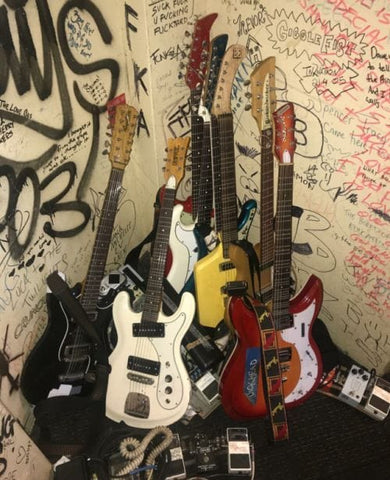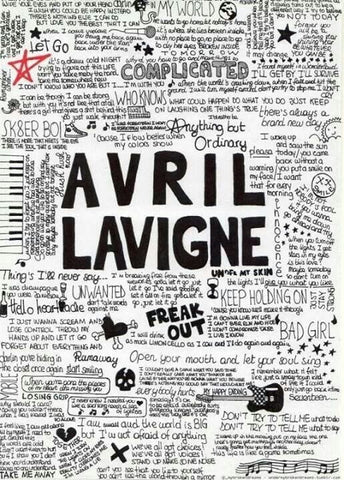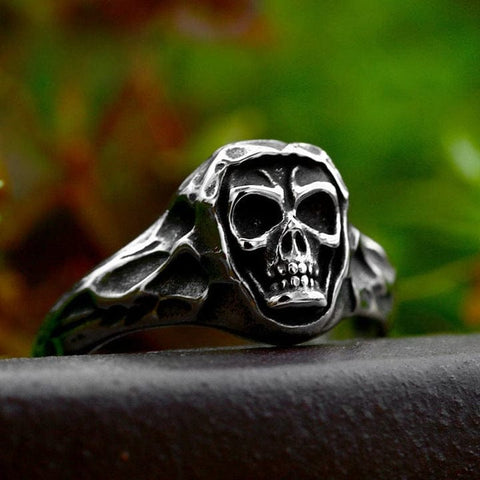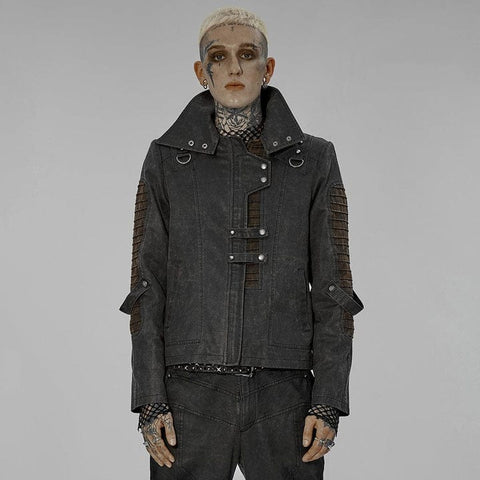What is Hardcore Punk?-Exploring the Hardcore Punk Culture
Hardcore punk culture has long been regarded as a powerful force within the music scene, characterized by its raw energy and unapologetic attitude. This subculture emerged as an evolution of punk rock, but it quickly distinguished itself with its own distinct identity. In this blog post, Punk Design invites you to explore the world of hardcore punk!
What is the Origin of Hardcore Punk?
Hardcore punk is a subgenre of punk rock that originated in the late 1970s, particularly in the United States. It developed as a response to the perceived commercialization and perceived dilution of the original punk rock sound. Hardcore punk is characterized by its fast tempos, short song durations, aggressive and often political lyrics, and a DIY (do-it-yourself) ethos. The exact origin of hardcore punk can be attributed to a combination of factors and events.
Musical Evolution of Punk
In the mid-1970s, punk rock emerged as a reaction against the excesses of mainstream rock music and the societal and political issues of the time. Bands like The Ramones, The Sex Pistols, and The Clash laid the foundation for the punk rock sound with their raw energy and simple song structures.
American Punk Scene
The punk movement quickly crossed the Atlantic to the United States. American bands embraced punk's DIY spirit and ethos, and the sound evolved in response to local conditions.
Urban Decay and Discontent
Many early hardcore punk bands emerged from cities experiencing economic decline, poverty, and social unrest. This urban decay and discontent environment influenced the aggressive and confrontational nature of hardcore punk lyrics and music.
Faster and Aggressive Sound
As punk rock gained popularity, some bands began to push the boundaries of speed and intensity. Bands like Black Flag, Bad Brains, and Minor Threat are often credited with pioneering the faster, more aggressive sound that would define hardcore punk music. These bands played shorter, more frenetic songs compared to their punk predecessors.
DIY Ethos
Hardcore punk embraced a robust do-it-yourself ethos, emphasizing independent production, distribution, and music promotion. Hardcore bands and fans created their record labels, booked their shows, and circulated fanzines to communicate and promote their ideas.
Straight Edge Movement
The straight-edge movement, which began with bands like Minor Threat, promoted a drug-free and abstinent lifestyle. This ideology became a significant aspect of the hardcore punk subculture.
Political Activism
Hardcore punk often incorporated political and social commentary into its lyrics. Many hardcore bands addressed war, inequality, racism, and government corruption. This emphasis on political activism set hardcore punk apart from the earlier punk rock movement.
The combination of these factors led to the emergence of hardcore punk music as a distinct and influential subgenre within punk rock. It's important to note that the hardcore punk scene was not confined to one specific location; it developed simultaneously in various cities across the United States, with each region contributing its unique flavor to the sound and culture.
What are the Characteristics of Hardcore Punk music?
Hardcore punk music is known for its aggressive, fast-paced music and often politically charged lyrics. It has distinct characteristics that set it apart from other forms of punk and rock music. Here are some key attributes of hardcore songs.
Fast and Aggressive Tempo
Hardcore punk is known for its blistering tempo. Songs are typically played faster than traditional punk rock, creating an intense and energetic punk style.
Short Song Length
Hardcore songs are usually relatively short, often lasting less than two minutes. This brevity contributes to the genre's intensity and urgency.
Simple Song Structures
Hardcore punk often features straightforward song structures with minimalistic arrangements. This simplicity helps maintain the high energy and rawness of the music.
Distorted and Raw Sound
The music is characterized by its raw and unpolished production quality. Distorted guitars, aggressive drumming, and shouted vocals are standard features of hardcore punk.
Shouted and Gruff Vocals
Vocalists in hardcore punk bands typically use shouted and aggressive vocal styles. The lyrics are often delivered with intensity, and the vocals may be intentionally harsh and unrefined.
Social and Political Themes
Hardcore punk lyrics often address social and political issues, including anti-authoritarianism, anti-capitalism, protest, and activism. The genre is known for its aggressive and rebellious messages.
DIY Ethic
Hardcore music has a strong "do-it-yourself" (DIY) ethic. Bands often self-produce their music, create album artwork, and book shows. This DIY approach reflects the genre's independence and anti-commercial stance.
Straightforward and Direct Lyrics
Hardcore lyrics are straightforward, direct, and emotionally charged. They often convey a sense of urgency and frustration, tackling issues head-on without elaborate metaphors.
Overall, hardcore music is a genre that places a strong emphasis on intensity, directness, and social engagement. It has had a lasting impact on both the hardcore scene and the broader music genres, inspiring countless bands and individuals to express themselves authentically and unapologetically.
Which are the First Hardcore Punk Bands?
Hardcore punk is a faster, more aggressive offshoot of the punk rock movement. While there isn't a single "first" hardcore punk band, several early bands played a significant role in shaping the genre.
Black Flag: Formed in 1976 in Hermosa Beach, California, Black Flag is often considered one of the pioneers of hardcore punk. Aggressive guitar riffs, fast tempos, and confrontational lyrics characterized their early music. Black Flag's DIY approach extended beyond their music, as they were known for organizing their tours, releasing their records through their label SST Records, and designing their album artwork. Their album "Damaged" (1981) is a classic example of early hardcore punk sound.
Bad Brains: Originating from Washington, D.C., in 1977, Bad Brains introduced a unique blend of hardcore punk with reggae and dub influences. Their self-titled album (1982) showcased their ability to easily switch between blistering punk rock and mellow reggae. Bad Brains' technical prowess and genre-defying sound made them stand out in the early hardcore scene.
Dead Kennedys: Formed in San Francisco in 1978, Dead Kennedys combined satirical and politically charged lyrics with fast, energetic music. Their album "Fresh Fruit for Rotting Vegetables" (1980) critiqued various aspects of society, from consumerism to government. Lead singer Jello Biafra's distinctive vocals and the band's catchy yet aggressive sound significantly shaped the hardcore punk sound.
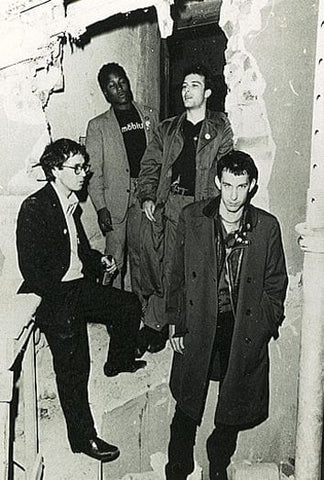
Minor Threat: Hailing from Washington, D.C., Minor Threat profoundly impacted the straight-edge subculture within hardcore punk. Their EP "Minor Threat" (1981) introduced the straight-edge philosophy, advocating for a clean, drug-free lifestyle. Musically, they played fast, intense songs with short, powerful bursts of energy that became a hallmark of the genre.
Circle Jerks: Emerging from Los Angeles in 1979, Circle Jerks played a key role in the Southern California hardcore scene. Their album "Group Sex" (1980) is a quintessential example of the West Coast hardcore sound—fast, aggressive, and filled with short, snappy songs.
Agnostic Front: Formed in New York City in the early 1980s, Agnostic Front helped shape the sound of East Coast hardcore punk. Their music often delved into themes of urban life and social issues. Albums like "Victim in Pain" (1984) are emblematic of the raw, aggressive style that characterized early East Coast hardcore.
The Germs: Based in Los Angeles and active in the late 1970s, The Germs were known for their chaotic and unpredictable live performances. Their music was characterized by its raw, lo-fi sound and frontman Darby Crash's distinct vocals. The Germs' short-lived career left a lasting impact on the hardcore punk scene.
These hardcore musicians, along with others like Minor Threat, SSD, Negative Approach, and Discharge (from the UK), laid the foundation for the hardcore punk movement. Band members often wore distressed pants, band T-shirts, and leather jackets, occasionally incorporating elements of Rastafarian colors like red, green, and gold. Their music, attitude, and DIY ethos created a vibrant subculture that continues to influence hardcore punk musicians and youth culture to this day.
What is the Hardcore Punk Fashion?
At its core, hardcore punk music and fashion both respond to the prevailing consumerist and mainstream culture of their times. Just as the music challenged the industry's established norms with its fast-paced, aggressive sound, the standard hardcore punk clothing embraced a rugged and more provocative fashion style. DIY ethics played a pivotal role, as adherents rejected mass-produced attire in favor of self-customized clothing. This led to ripped jeans, biker-style leather jackets adorned with band patches, and T-shirts that displayed provocative slogans and graphics.
Hair and grooming were also part of the hardcore punk fashion identity. As a rejection of societal expectations, individuals sported untamed, unruly hairstyles – often short and jagged. Brightly colored hair, shaved heads, and various piercings were not uncommon, representing a visual rebellion that mirrored the sonic rebellion of the music.
Accessories were crucial in completing the hardcore punk look. Studded belts, skull rings, and leather gloves were worn not only for aesthetic reasons but also as symbols of resistance. Pioneered by bands like the Sex Pistols and The Ramones, this fashion trend gained momentum and evolved as the hardcore punk scene developed. Hardcore punk fashion continued to thrive through the 1980s and 1990s, with various regional scenes contributing to its evolution.
While the fashion often adheres to a certain ruggedness, it's important to note that there is no single, universal hardcore punk look. The movement has always celebrated individuality, encouraging followers to personalize their punk style. This inclusivity has allowed the fashion to remain relevant and adaptable over the years, with contemporary interpretations mixing elements of vintage hardcore punk attire with modern influences.
Hardcore Punk Culture Today
Hardcore punk culture continues to thrive and evolve today, embodying a spirit of rebelliousness, DIY ethics, a passion for intense music, and punk fashion clothing. Emerging in the late 1970s as an aggressive offshoot of punk rock, hardcore punk has since become a global movement, influencing numerous subgenres and communities.
One of the defining aspects of hardcore punk culture is its emphasis on independent and self-sufficient practices. DIY (Do It Yourself) ethos remains at the core, with bands self-releasing their music, organizing their shows, and creating their merchandise. This independent spirit extends to zines (small-scale self-published magazines), record labels, and underground distribution networks. Through these channels, the culture fosters a sense of autonomy and resists commercialization.
The music itself remains the lifeblood of hardcore punk culture. Characterized by fast-paced, aggressive, and often raw sounds, hardcore punk features short and intense songs with furious guitars, relentless drumming, and shouted or screamed vocals. While the genre has expanded to encompass various subgenres like melodic hardcore, metallic hardcore, and power violence, the common thread is a sense of urgency and catharsis.
Punk clothing is another significant aspect of hardcore punk culture today. While the fashion trends within the scene are diverse and vary between subgenres, certain elements remain iconic. Common elements of hardcore punk fashion include band t-shirts, ripped jeans, punk jackets adorned with patches and pins, faux leather boots, and bold hairstyles such as mohawks or shaved heads.
Get ready to dive headfirst into the exhilarating world of hardcore punk and embrace the raw intensity and radical ethos that make this subculture a truly unique and powerful force in the realm of music. Explore the origins, listen to the classics, discover new hardcore bands, dress in punk clothing, engage with the community, and let the relentless energy and unapologetic spirit of hardcore punk ignite your passion for rebellion and self-expression.
If you are looking for punk clothing, Punk Design has been waiting for you. Our collection includes the best categories to help you search for the right product. If you have any questions during the purchase process, please feel free to contact us. We strive to ensure that you have a pleasant shopping experience.

